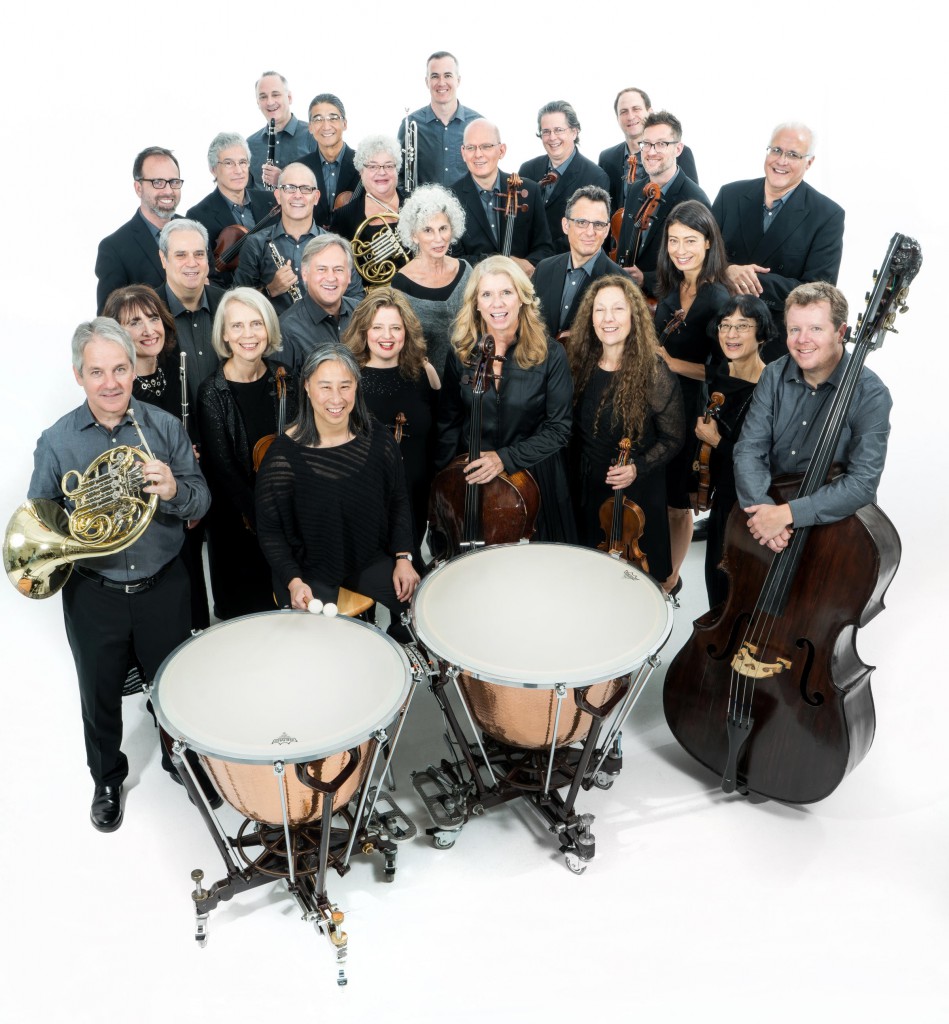Orpheus Chamber Orchestra brings a varied program to Arsht Center

The Orpheus Chamber Orchestra performed Saturday night at the Arsht Center in Miami. Photo: Matt Dine
The Orpheus Chamber Orchestra brought Mozart, Dvořák and a world premiere to Miami on Saturday night, appearing at the Arsht Center as part of an East Coast tour that will end at Carnegie Hall.
Founded in 1972, the orchestra—in the egalitarian spirit of the time—rejects authoritarianism by playing without a conductor. Individual members take responsibility for guiding rehearsals, but on stage the ensemble goes without the services of a baton-waving leader in evening clothes.
It’s tempting to assess every strength and weakness of the performance through this absence of a defined leader—the rich, genial warmth of the strings, so different from the drilled efficiency of a traditional orchestra, the individuality of horns, oboe and bassoon, the occasional muddy passage in which the composer’s ideas felt hard to discern.
But for good or bad, these could occur in any orchestra, and there’s no question that Orpheus, which has been a top ensemble for years, has found a manner of playing that works for it.
The concert opened with the world premiere of Still Life by James Matheson, an American composer who has received commissions from top orchestras, including the New York Philharmonic and Chicago Symphony Orchestra. Born in Iowa, Matheson now lives in Brooklyn, like many of his counterparts. And like many of his counterparts, he chose to introduce his music with a written program note that didn’t go far toward enhancing the listener’s appreciation.
A sample: “There’s a double meaning to Still Life; both in its reference to a style of visual art that focused on the complexity of arrangement within a seemingly simple form, as well the fact that the surface simplicity of a still life also has a shimmering activity in the details of the work; a productive tension between the surface detail and the simple form that holds it together. The second meaning here is simply acknowledging that, despite the division into polarized groups that define the political and social system today, it’s still life as it has always been.”
The work, commissioned by Orpheus, opens with dark, dramatic chords dominated by strings. There’s a sudden silence, then mutterings in the winds. This pattern repeats, with more big chords followed by silence and then spidery wind music. The grim tone gives way to brighter, livelier passages in strings, leading to an optimistic ending with a throbbing, long-held major chord. Although some of the preceding dramatics were compelling, the affirmative ending felt facile and unearned.
Javier Perianes joined the orchestra for a performance of Mozart’s Piano Concerto No. 27. In the opening Allegro, there was the occasional mushy passage in strings, and Perianes sometimes lost the thread in passagework that felt under-articulated and under-shaped. But the movement was full of rewarding episodes, particularly the minor-key dialogue between piano and winds, leading to string passages against smooth runs in the piano—played with a natural flow, intimacy and collegiality.
In the Larghetto, the Spanish pianist performed the simple melody in an expressive, almost dreamy manner, with subtle gradations of tone and volume. If his approach was more subtle than Mozart might have intended, it created an absorbing interlude. The concluding movement contained a couple of passages in which a conductor’s hand might have brought out the inner voices with more clarity, particularly one in which violas play an accompanying melody against one in the violins. But the movement came off with a natural buoyancy and energy.
Dvořák’s Bagatelles, Op. 47, were originally scored for string trio and harmonium and were here heard Saturday as arranged for chamber orchestra by the American conductor Dennis Russell Davies. The orchestra’s plush tone came to prominence here, with rich playing in strings and expressive melodies in oboe and horn. Yet there seemed to be a need for more emotional abandon, both in its dark, romantic melodies and its rustic, dance-like passages.
The best playing of the evening came in Mozart’s Symphony No. 33, a work that plays to the orchestra’s strengths of individual virtuosity and unity of spirit, without the need to accommodate a soloist.
There were decisive attacks in the opening Allegro and strikingly resonant and forceful trill passages in violins. Soft passages rustled with busy, understated energy. Winds brought a touch of humor to the motifs that topped the ends of phrases.
In the Andante, the orchestra’s transparent texture allowed the crucial cello and bass line to emerge, without covering up the melody in the violins. There were sharp attacks and piquant wind playing in the Menuetto. The last movement bubbled with energy, with clear, rapid pianissimo passages and an exuberant tone.
In the encore, “The Dance of the Furies” from Gluck’s opera Orfeo ed Euridice, the orchestra showed its ability to play with whipcrack precision. A rapid few minutes of demonic energy, the piece came off in an intense, glittering, virtuoso performance, with strings playing with dazzling speed and articulation.
Posted in Performances
Leave a Comment
Sun Jan 6, 2019
at 12:46 pm
No Comments







